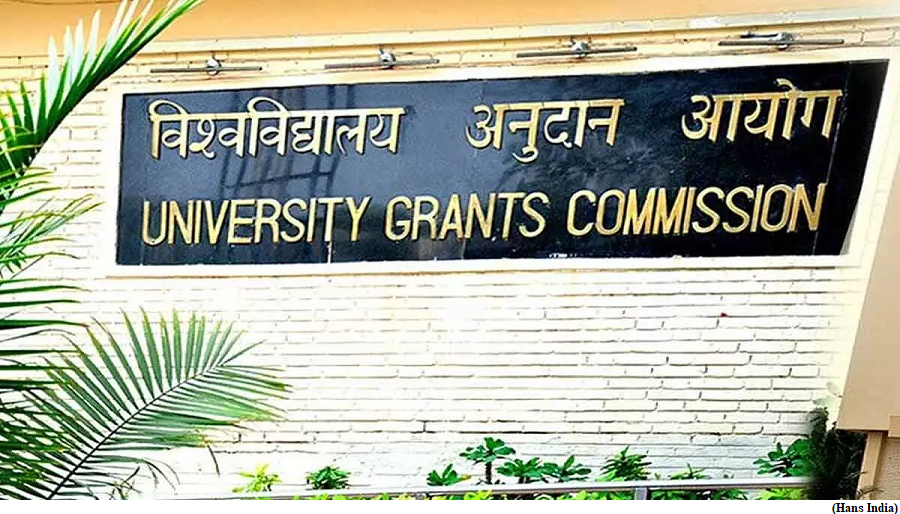UGC releases draft norms on recognition of colleges in India (GS Paper 2, Education)

Why in news?
- The University Grants Commission (UGC) has published the draft guidelines on recognition of colleges.
- It has sought comments from the public on the new guidelines titled the “UGC (Recognition of Colleges under Clause (f) of Section 2 of the UGC Act) Regulations, 2023”.
- The proposed guidelines will be applicable to colleges as defined under the UGC Act.
Key Highlights:
- The draft guidelines set conditions for UGC recognition of a college and states that it should be affiliated to a university in accordance with the provisions of UGC (Affiliation of Colleges by Universities) Regulations.
- The college should comply with all the provisions of the UGC Act and Rules and offer programmes of study leading to the award of degrees or diplomas of not less than one academic year and for which the minimum qualification for admission is a Bachelor’s degree.
- For recognition, a college should furnish documents related to the year of establishment, affiliation certificate issued by the university and approval of the statutory/regulatory body with an undertaking that the college complies with all UGC provisions.
- All existing colleges shall have to obtain UGC recognition under Section 2(f) within three years from the date of notification of these regulations.
- The colleges established/affiliated after the notification of these regulations shall have to obtain UGC recognition under Section 2(f) within three years of their establishment/affiliation.
Verification:
- The responsibility of verification of the documents is with the universities.
- The UGC may also decide on physical or virtual verification of a college or constitute teams for such verification at any stage of application.
- Failing to rectify the deficiencies pointed out after such verification, the Commission may take necessary action for withdrawal of the recognition granted to the College under Section 2(f) of the UGC Act, 1956.
Aardvarks are crucial for sub-Saharan Africa’s ecosystem
(GS Paper 3, Environment)
Why in news?
- A warming climate is negatively impacting the chances of long-term survival of aardvarks in sub-Saharan Africa.

Impact of climate change:
- The burrowing nocturnal mammals are affected by incredibly dry landscapes, which isolates them and leaves them vulnerable to rapid climate warming.
- The aridification, or drying and heating of the aardvarks’ landscape, affects aardvark distribution and movement across the landscape, the researchers found on examining faecal samples of the animals.
- Long-term droughts, such as the one currently affecting the Horn of Africa region, have been made 100 times more likely by climate change.
Habitat:
- Aardvarks are found over much of the southern two-thirds of Africa and their habitat is savannah and semiarid areas.
Role in ecosystem:
- These mammals are a crucial part of the ecosystem in sub-Saharan Africa.
- They eat termites that can destroy human-built structures and their burrows create important habitat for many other species.
- The researchers believe the species is understudied because they are nocturnal, hard to trap and exist in low densities across large and often remote landscapes.
Recent study:
- In this study, the researchers evaluated the degree and potential causes of population differentiation in aardvarks by investigating population genetic structure at multiple spatial scales.
- The researchers surveyed eight protected and four privately owned areas in South Africa, two protected areas in Eswatini (formerly Swaziland) and one location in Kenya to evaluate how landscape affected gene flow and genetic structure over local (350 kilometres) and regional (1,600 km) spatial extents.
- The researchers chose to evaluate population genetic structure in South Africa and Eswatini, as the region has many accessible protected areas of varying sizes.
- The study included one site from East Africa (Kenya) to provide a continental-scale comparison of genetic structure in contrast with regional investigations in South Africa and Eswatini.
- From 2016 to 2018, the researchers collected 253 aardvark faecal samples and analysed 104 of the highest quality for genetic information.
Key Observations:
- In South Africa, the genetic details collected indicated that aardvarks in the western, central and eastern regions were somewhat separated. They found individual aardvarks in multiple places up to 7.3 km apart; closely related aardvarks were separated by as much as 44 km and those within 55 km were more genetically alike.
- Across South Africa and Eswatini, arid areas increased resistance to gene flow, according to the study. Individual genetic differentiation was also predicted by differences in maximum temperatures at sampling sites.
- The arid areas acted as a landscape barrier to aardvark gene flow was most strongly supported, the study said. Lower rainfall likely results in less vegetation and, thus, fewer termites and ants on which aardvarks feed.
Way Forward:
- The study concluded that the genetic structure of aardvarks is strongly shaped by climate, with arid areas limiting gene flow and reflected apparent isolation by adaptation associated with temperature.
- The study recommended monitoring aardvark presence as an indicator of ecosystem change associated with aridification.



